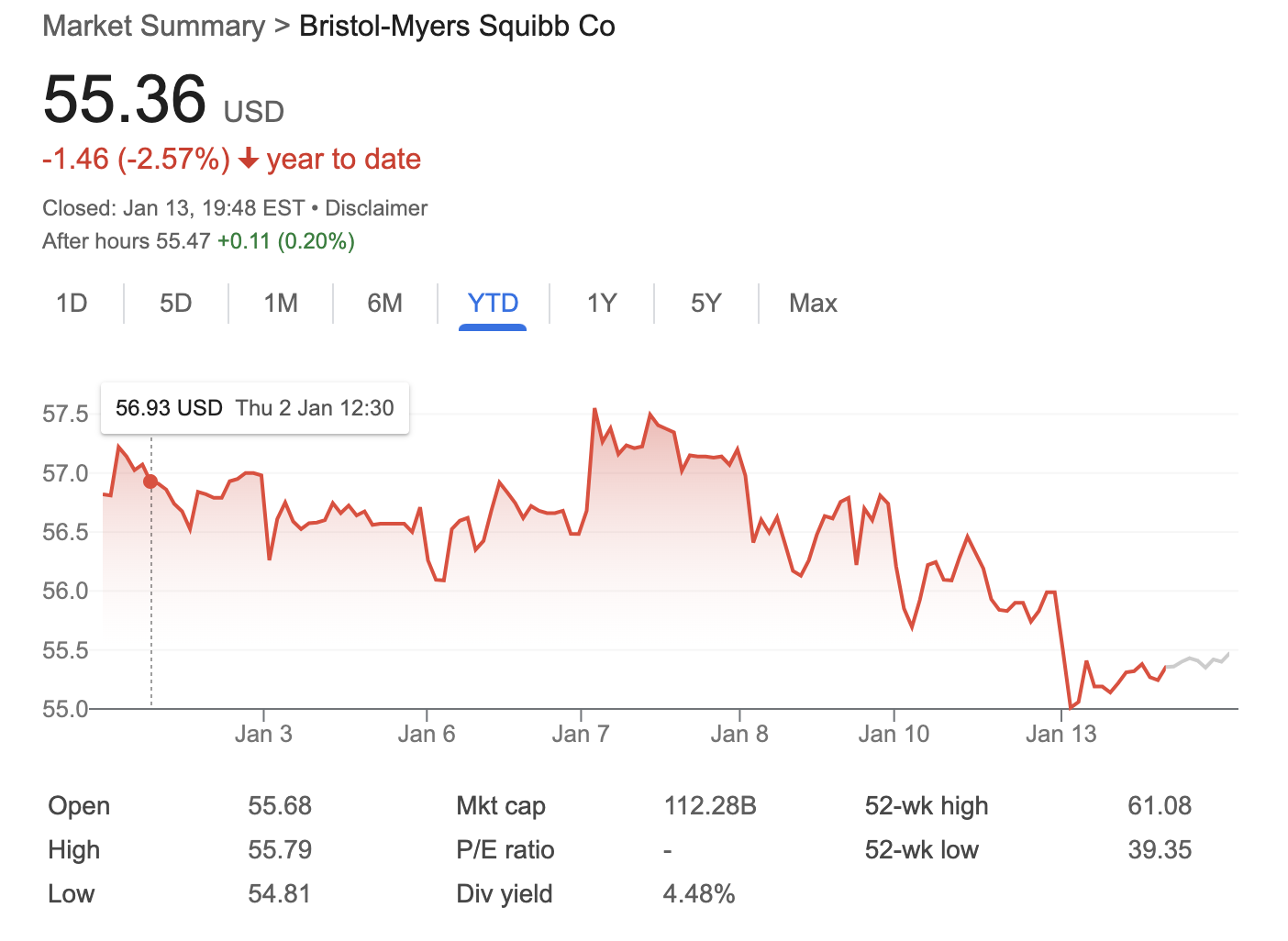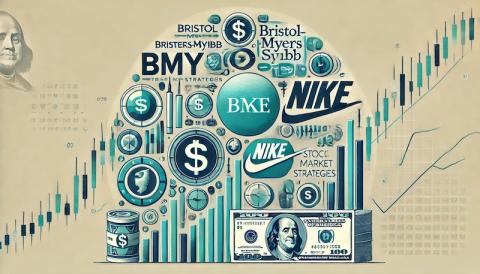On January 10, I was holding a covered call on Bristol-Myers Squibb (BMY), a dividend-paying stock, with the expectation that it would expire worthless. With an hour left before the market closed, BMY was trading above my strike price, and I was confident in the position.
With the situation in BMY seemingly under control, I opened a weekly put spread on Nike (NKE) to capture premium. That premium allowed me to buy an additional 0.1 NKE shares for our dividend portfolio. Managing a small portfolio means I limit open positions to avoid unnecessary complexity, especially since I’m still handling longer-term trades like Morgan Stanley (MS) with a March expiry.
 After the market closed, BMY unexpectedly dropped below the strike price, leaving me with an additional 100 shares. Instead of being called away, I retained the stock. On Monday, I initiated a new covered call with a January 17 expiry, collecting more premium and lowering our break-even price to $55.29.
After the market closed, BMY unexpectedly dropped below the strike price, leaving me with an additional 100 shares. Instead of being called away, I retained the stock. On Monday, I initiated a new covered call with a January 17 expiry, collecting more premium and lowering our break-even price to $55.29.
If the strike price of $56 is reached by this Friday, I’ll let the shares get called away. Including the $84.88 in total premium collected, this trade would yield a maximum return of $71.88, or 1.28% in just 11 days.
If the strike isn’t reached, I’ll continue rolling the trade until recovering fully. Holding BMY also provides the benefit of dividends, so this stock works well for covered calls in the meantime.
The NKE trade now depends on the stock staying above the strike price. If it does, the premium will be a clean addition to the portfolio, with no further obligations.
These trades highlight the need for adaptability in options trading. When surprises happen, having a clear plan allows you to adjust and stay on course.
Keep trades manageable and focused, especially with smaller portfolios, and always be prepared to roll or hold when needed.
Since September, 2024 our options trading portfolio has earned already $949.31
